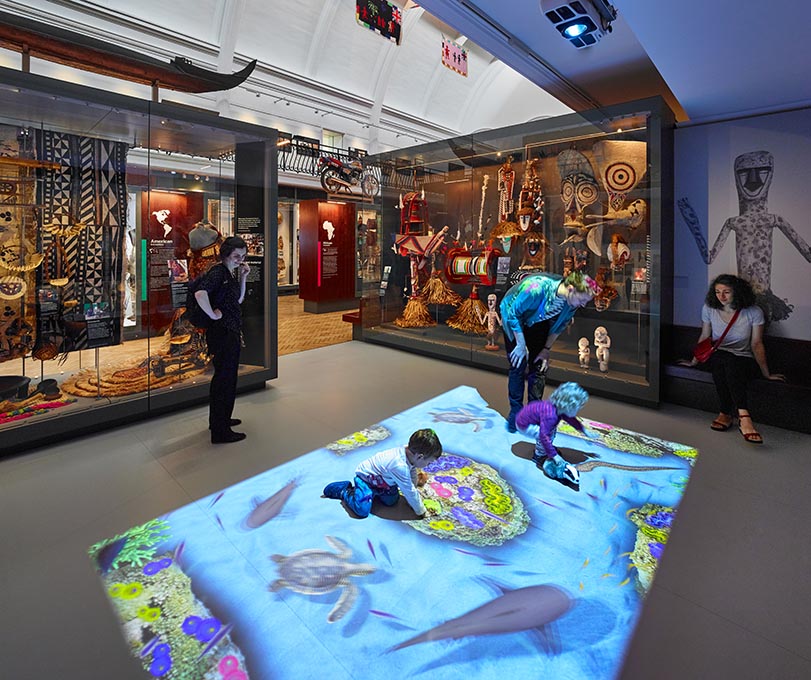OVERVIEW
The Horniman Museum and Gardens in South London is a relatively small museum, but it had big ambitions — to meet its founder’s original vision to ‘bring the world to Forest Hill.’ The new ‘World Gallery’ fulfils that vision. The Gallery is designed to showcase the museum’s internationally renowned collection of more than 3000 objects exploring world culture. Its aim is to engage visitors by connecting people, ideas and objects.
Video, audio and interactive media were to play a key role in presenting the Gallery’s key themes and enabling visitors of all ages to experience different global cultures. Electrosonic worked with project managers Fraser Randall, designers Ralph Appelbaum Associates, Yoho Media, fitout contractors Scena and the museum team on the design and integration of the audiovisual installation.
The entrance wall sets the tone for visitors with three large video talking heads introducing some of the fascinating artefacts on display. Later, visitors can find out more about the intentions of the museum’s Victorian founder Frederick John Horniman in an audio exhibit – Horniman Vision. The bulk of the Gallery is dedicated to exhibits from different regions of the world. In the African Encounter, a 55 inch LCD display with integrated audio is mounted within a street scene, recreating the atmosphere of a Lagos market.
American Encounters features a video wall replaying the sights and sounds of a spectacular Native American dance. This is complemented by an interactive installation of three totem poles celebrating the Bear, Raven and Killer Whale. Visitors can trigger audio stories by moving interesting items on the exhibits.
In Oceanian Encounters, a high-level projector recreates enticing images on the floor encouraging visitors to interact with moving fish, eels and coral. The Asian and European Encounters feature smaller displays showcasing local music and images to complement the regional artefacts.










.jpg?width=1500&height=995&name=ELC501_N17_medium%20(1).jpg)


